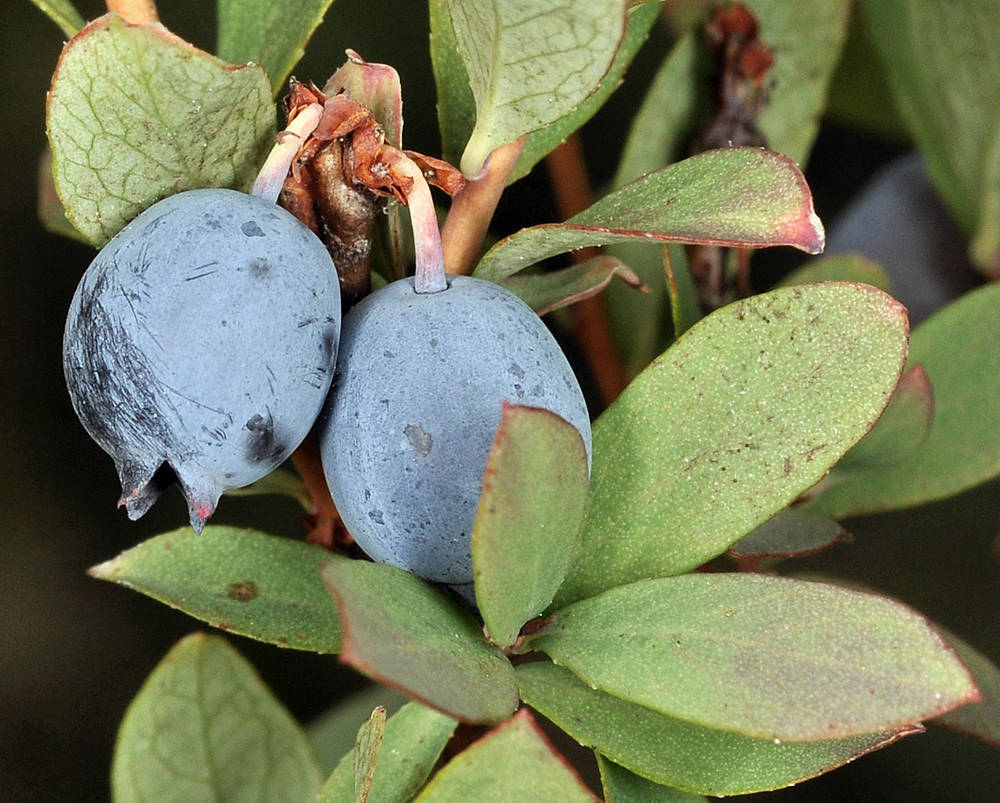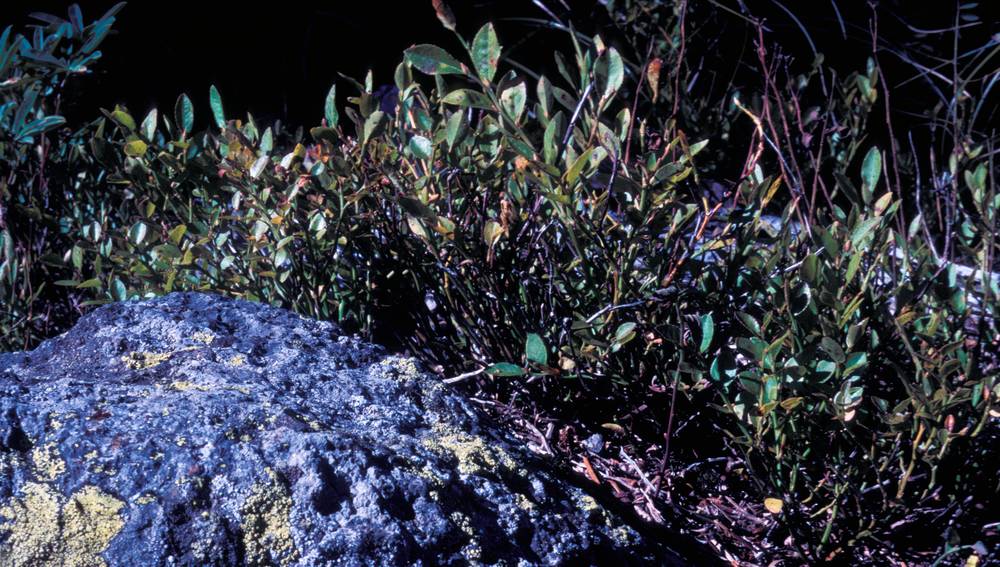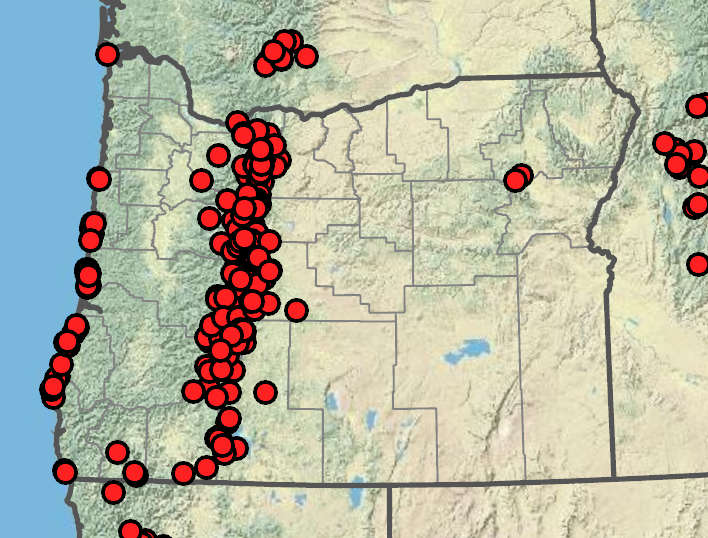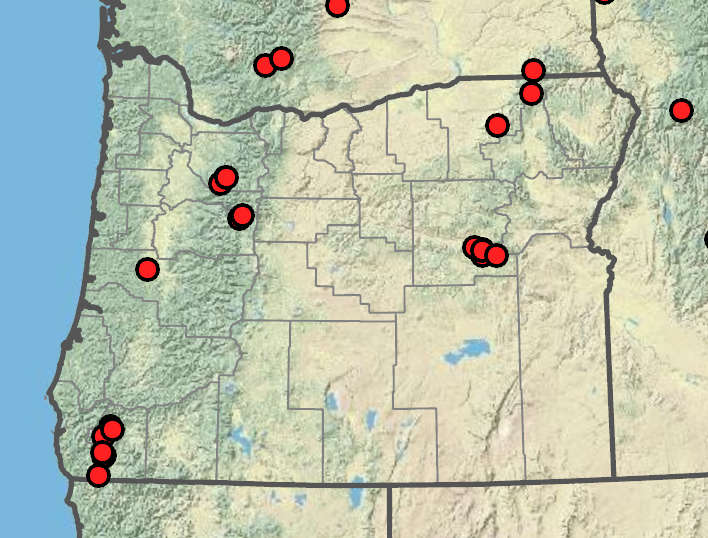Vaccinium uliginosum
Vaccinium myrtillus
bog bilberry, bog blueberry
whortleberry
ovate to elliptic, 9–29 × 4–18 mm; thin or thick at maturity;
margins entire;
tips rounded to acute;
surfaces abaxially glabrous or glaucous, adaxially glabrous.
elliptic to ovate, 11–20(30) × 5–10 mm, light green abaxially, green adaxially; thin; flexible;
margins sharply serrate from tips to near base, prominently veined;
tips acute;
surfaces abaxially glandular, adaxially glabrous.
racemes, 2–4-flowered, occasionally 1-flowered.
solitary flowers in axils.
distinct;
sepals 4 or 5, usually glaucous;
corollas urceolate, 4–6 × 2–5 mm, white to pink, glaucous;
petals 4 or 5;
filaments ? anthers, glabrous.
sepals 5;
calyces shallowly lobed, glabrous;
petals 5;
corollas ovoid-urceolate to globose, 3–7 × 4–7 mm, white to pink, glaucous;
filaments glabrous.
4–9 mm in diameter, blue to bluish black, with a faint bloom.
4–9 mm in diameter, dark red to bluish black; without a bloom.
=24, 48, 72.
=24, 48.
Vaccinium uliginosum
Vaccinium myrtillus
Wet mid-elevation montane and coastal habitats. Flowering May–Sep. 0–2400 m. BW, Casc, ECas, Est, Sisk. CA, ID, NV, WA; northern US and Canada; Asia, Europe. Native.
Some authorities consider the coastal form of V. uliginosum a distinct species (V. occidentale). If recognized, this species would be identified by its distinctly reticulated leaf veins, thin leaves, and smaller fruits.
Wet mid- to high elevation areas. Flowering Apr–Jul. 1100–2100 m. BW, Casc, Sisk. ID, NV, WA; northeast to Alberta and southeast to NM, Greenland; Asia, Europe. Native.
Morphologically, Vaccinium myrtillus is similar to V. scoparium, and at higher elevations their ranges overlap. Vaccinium myrtillus differs from V. scoparium by its generally larger leaves and flowers, often sparsely puberulent twigs, and its broom-like habit.
Stephen Meyers
Stephen Meyers
- Local floras:
BC,
OR,
WA
- Local Web sites:
Flora NW,
PNW Herbaria
WildflowerSearch
iNaturalist (observations)
USDA Plants Database
- LBJ Wildflower Center
- SEINet
- Plants of the World Online
- Encyclopedia of Life
- Wikipedia
- Google Image Search
- Local floras:
BC,
OR,
WA
- Local Web sites:
Flora NW,
PNW Herbaria
WildflowerSearch
iNaturalist (observations)
USDA Plants Database
- LBJ Wildflower Center
- SEINet
- Plants of the World Online
- Encyclopedia of Life
- Wikipedia
- Google Image Search





